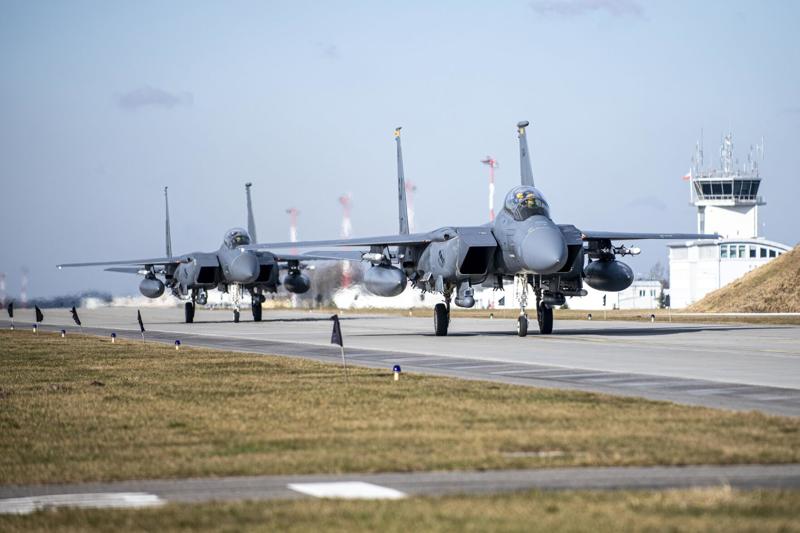(The Center Square) – Fiscal support, forward-thinking protection, and assistance to veterans were key stories around the military footprint in North Carolina in 2023.
The state’s six major military bases include the U.S. Army’s Fort Liberty and Pope Air Force Base, both in the southeastern part of the state; Seymour Johnson Air Force Base in eastern North Carolina; and U.S. Marine Corps Air Station Camp Lejeune and MCAS New River along the coast, not more than an hour’s drive from the more inland MCAS Cherry Point. There are also two U.S. Coast Guard bases along the northern coast at Elizabeth City; and the Military Ocean Terminal Sunny Point on the southern coast in Brunswick County.
Fiscal support
A defense spending bill includes a 5.2% pay raise for service members, $398.9 million in construction for the state’s military bases, and a provision to preserve the F-15E Strike Eagles stationed at Seymour Johnson Air Force Base.
The $886 billion spending in the legislation included $165 million at Fort Liberty, formerly known as Fort Bragg, for new barracks and other improvements, and $110 million at Camp Lejeune for facility and maintenance work. Another $109.5 million was designated at Cherry Point for similar construction, while $12 million is to complete the Army Reserve Center in Asheville and $2.2 million for the National Guard’s Aviation Support Facility in Salisbury.
HBOT for Vets
The state budget approved in September appropriated $500,000 that will help military veterans struggling with post-traumatic stress disorder and traumatic brain injuries.
Hyperbaric oxygen therapy, known as HBOT, has significantly reduced suicidal ideations and an array of other symptoms in about 60 North Carolina military veterans suffering from PTSD and TBI over the last two years through a program called HBOT for Vets.
North Carolina is home to roughly 800,000 active duty or veteran families, including about 650,000 veterans. Roughly a quarter of veterans nationwide suffer from PTSD or TBI, suggesting more than 162,000 North Carolina veterans may benefit from HBOT.
Land, water protection
Protecting the state’s strong military footprint has included proposals that would prevent foreign adversaries from purchasing land near them. And it’s possible wind energy development off the coast was blocked because the area is used by multiple branches of the nation’s armed forces.
Efforts have swelled on the state and federal level to protect farmland from adversaries – notably China – making purchases. North Carolina Republican Sens. Thom Tillis and Ted Budd supported an amendment in the defense spending bill, and Tillis helped usher separate legislation. A proposal in the state House of Representatives passed unanimously but was shuffled into the rules committee of the Senate.
The Bureau of Ocean Energy Management did not include North Carolina waters in approving leases for Wind Energy Areas in August. A reason wasn’t given, but it’s known the U.S. Department of Defense had raised concerns with four of the six areas considered that are “highly problematic” for the Navy and Air Force. It suggests wind turbines attached to the Atlantic seabed would create challenges for military operations and facilities including the Dare County bombing range.
Name change
As referenced earlier, Fort Liberty is the new name for the installation formerly known as Fort Bragg. It is 251 square miles touching four counties and home of the Army’s famed 82nd Airborne Division and Special Operations Forces, troops who when needed get the president’s “911 call.”
Total cost to taxpayers to change the name – signage, vehicle decals, street signs, historical markers, etc. – was pegged at $6.3 million. The change was made because Braxton Bragg, a U.S. Army artillery commander and Warrenton native, served as a Confederate general in the Civil War.







